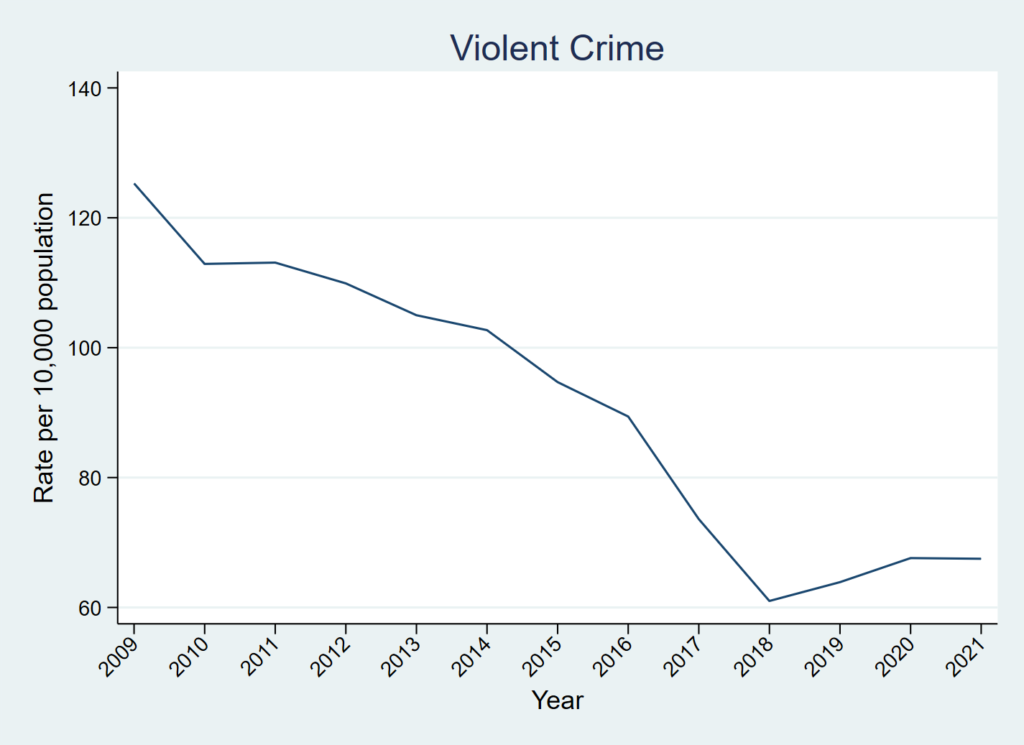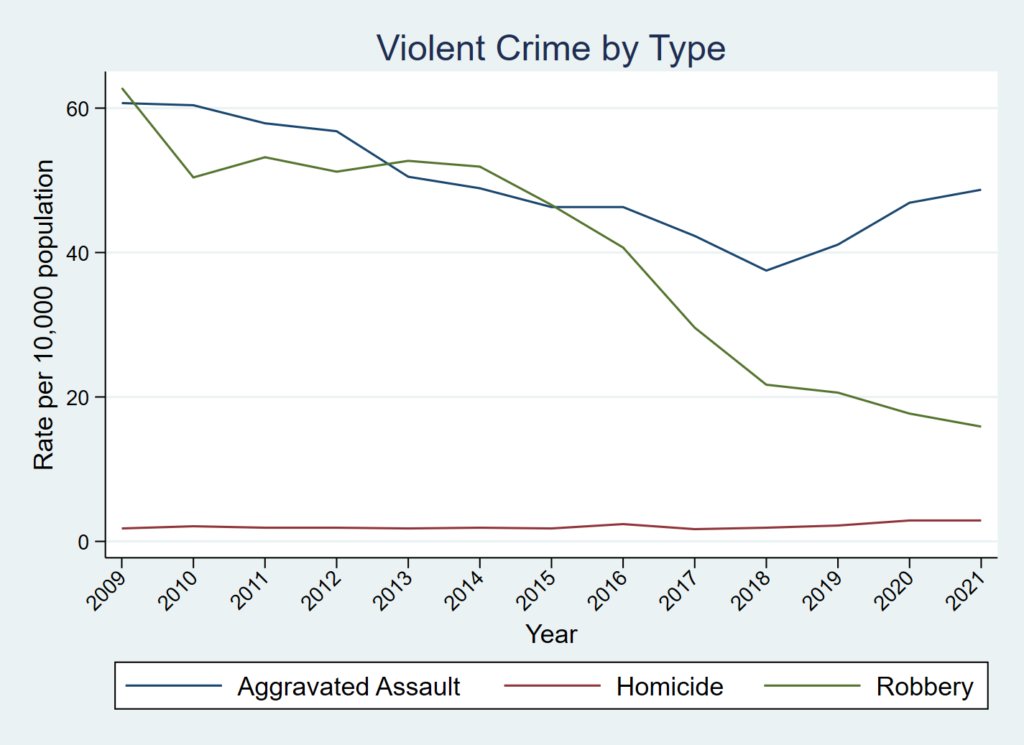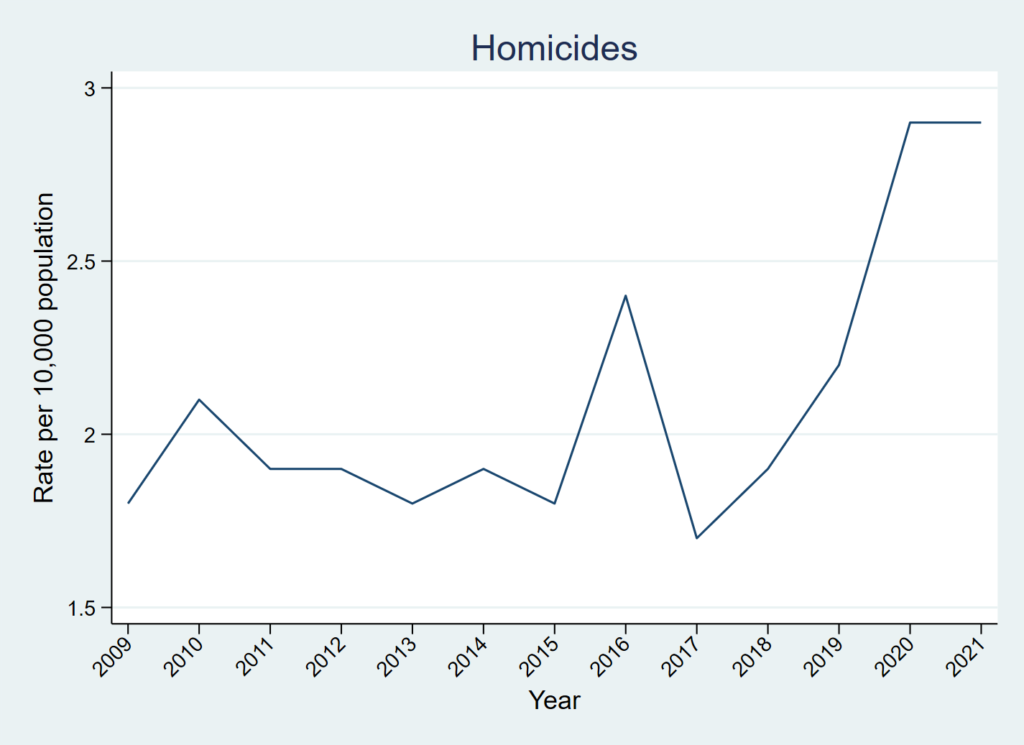According to the latest Metro Atlanta Speaks survey, concerns about crime eclipsed all others (including the perennial favorite of transportation) with 32.3% of respondents naming crime as the biggest problem facing the region. These concerns were prominent enough that both candidates in the Atlanta mayoral runoff– not to mention most of the candidates in the rest of the field– made addressing crime a signature issue in their campaigns.
Because the Atlanta Police Department has made incident-level crime data publicly available since 2009, we are able to take a closer look at trends for the city over the last 13 years. Their downloadable COBRA dataset allows us to examine three types of violent crime (homicide, aggravated assault, and robbery) and three types of property crime (burglary, larceny, and auto theft).
Spoiler alert: despite perceptions to the contrary, crime in Atlanta is at or near historic lows in most categories, though there is one important exception.
Property Crime
Property crime has decreased steadily over this entire period; the current property crime rate—the number of crimes per 10,000 population—is less than half that of 2009:

This trend holds true for all three types of property crime, though auto theft has seen the least decline of the three:

Violent Crime
In aggregate, violent crime also decreased significantly over this time period, though there has been a slight increase 2019-2021 off from the low in 2018. Violent crime rates in 2020 and 2021 levels were just over half of the levels seen in 2009 and even in 2021 remained lower than any year 2017 or earlier.

A more complex story emerges when violent crimes are broken down by type: the robbery rate has declined steadily since 2014 and is less than one-third of its 2009 level. Aggravated assault declined steadily until 2018, and while it has increased over the period 2019-2021, it remains lower than the 2014 level and more than 20 percent lower than in 2009. Because homicides are so much less common, they appear flat on this graph when put against other violent crimes.

But a closer look reveals that homicides have been on the rise: the homicide rate was mostly flat from 2009 to 2018, followed by steep increases in 2019 and 2020 and no appreciable improvement in 2021. The 2021 homicide rate was roughly one and a half times that of 2009.

Thus, we see that while violent crime as a whole is sharply down, the opposite is true for homicide– the rarest, most serious, and also the type of crime most likely to make the evening news. The salience of homicides causes them to have a stronger impact on perceptions, outweighing the overall declines described in the graphs above.
So why is the homicide rate bucking the overall trend? Unfortunately, the COBRA data does not allow us to examine this directly, but it is reasonable to posit that the type of weapon used– and therefore the deadliness of the force involved– is likely a factor. According to the FBI’s Crime in the United States reports (see Table 22 for each year), the percentage of aggravated assaults in Georgia involving a firearm has trended upward over this period, growing from 25.0% in 2009 to 34.4% in 2019. The upshot is that while Atlantans are much less likely to be victims of violent crime than before, violent crime is increasingly likely to turn deadly when it does occur.
Where are these weapons coming from? One potentially important source is legally purchased but improperly secured firearms. For example, the Atlanta Journal-Constitution reported on June 9th of last year that 827 guns had been reported stolen year-to-date just from cars, just within the city limits. Thus, steps people are taking to protect themselves may paradoxically be making us less safe.
A future blog post will take a deeper dive into the crime data to investigate trends by Neighborhood Planning Unit.

